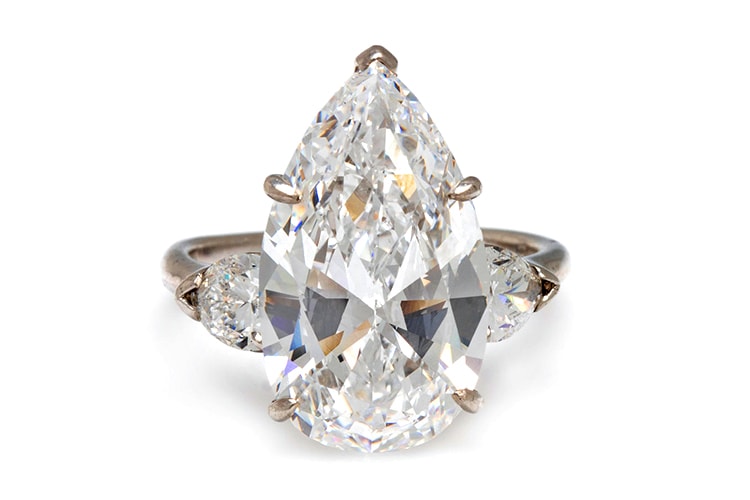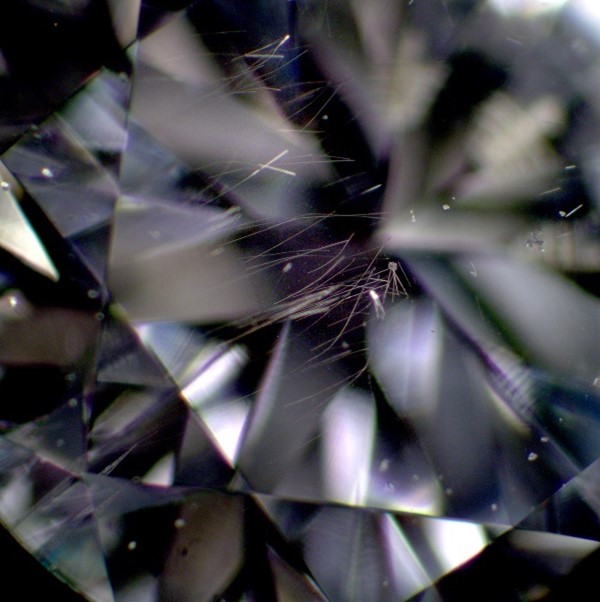Laboratory-Grown Diamond FAQs

Are laboratory-grown diamonds “real” diamonds?
Yes. Laboratory-grown diamonds are chemically, physically, and optically identical to natural diamonds on the basic gemological level. They have the same crystal structure, hardness, and brilliance. Laboratory-grown diamonds are not diamond simulants, like cubic zirconia (CZ), moissanite, or other materials that imitate, or are considered diamond “lookalikes.”
How are laboratory-grown and natural diamonds similar?
Properties: Laboratory-grown diamonds and natural diamonds have essentially the same chemical, physical, and optical properties. Both are the mineral diamond, crystallized in the cubic crystal system. This means they are both considered diamond. Physically, they have the same relative hardness, refractive index, specific gravity, and other gemological properties.
Grading: Laboratory-grown and natural diamonds are evaluated on the same industry-standard 4 Cs scale for cut, color, clarity, and carat weight. Just like natural diamonds, laboratory-grown diamonds are submitted to gemological laboratories such as Gemological Science International (GSI) where they are screened using leading-edge technologies. From there they are evaluated by expert gemologists for the 4 Cs, any treatments or enhancements, and quality control processes.
Finishing: Laboratory-grown diamonds and natural diamonds are cut and polished and mounted into jewelry in the same way.
How are laboratory-grown diamonds different than natural diamonds?
When we say laboratory-grown diamonds are “essentially” the same as natural diamonds, there are differences at the atomic level because of the differences in growth.
Growth Method: Laboratory-grown diamonds are created over the course of weeks in a controlled environment using advanced technology. The two most common methods are the High-Pressure High Temperature (HPHT) method and the Chemical Vapor Deposition (CVD) method.
Natural diamonds grew deep under the Earth’s surface for billions of years, before being ejected to the surface in explosive volcanic eruptions in the host rocks in which they formed. The carbon source for natural diamonds was from billions of years ago when the Earth was formed.
Age: Laboratory-grown diamonds are grown over the course of weeks. Natural diamonds are grown over millions to billions of years.
Diamond Type: Diamonds are classified by type, according to the impurities in the crystal lattice. Natural diamonds and laboratory-grown diamonds can be of the same diamond types, but for the most part, laboratory-grown diamonds are usually type IIa (no detectable nitrogen), type IIb (detectable boron), or type Ib (single nitrogen) since they don’t undergo the length of time (millions of years of sustained heat and pressure) to create aggregated nitrogen defects like type IaA or IaB that exist in natural diamonds.

How are Laboratory-Grown Diamonds Grown?
The two most common methods to create laboratory-grown diamonds are the High-Pressure High Temperature (HPHT) method and the Chemical Vapor Deposition (CVD) method.
High-Pressure High Temperature (HPHT)
- A carbon starting material such as highly refined and purified graphite, a metallic flux powder (usually transition metals such as Fe, Ni, Co, or Mn) which lower the temperature and pressure required for diamond growth), and a tiny diamond seed (that acts as a “template” for diamond formation) are placed into a growth capsule.
- The growth capsule is placed at the center of the machine and is heated to over 1,300 °C and over 50,000 atmospheres of pressure is applied by the press.
- Once the ideal conditions are reached, the metallic solvent/catalyst turns into a molten metal solution and dissolves the carbon.
- The system creates a temperature gradient, so the carbon material then migrates through the flux towards the cooler diamond seed and the carbon atoms slowly build upon the crystal structure of the diamond seed to form a laboratory-grown diamond crystal.

HPHT-grown diamonds need the pressure of the Eiffel tower balanced on a postage stamp, and a heat hotter than Kilauea lava!
Chemical Vapor Deposition (CVD)
In the CVD process, diamonds grow from a hydrocarbon gas mixture subjected to moderate pressures and temperatures in a vacuum chamber. Gem-quality diamonds synthesized using CVD harness the fourth state of matter, plasma; This provides the energy needed to form a diamond.
Inside a CVD chamber, carbon-based gases, commonly methane, and other reactant gases such as hydrogen or oxygen are added to the environment, and heated to about 800-1,200 °C. This causes the gases to break apart, and release their carbon atoms, which precipitate onto a diamond-seeded substrate. This release of carbon builds layer upon layer of diamond, a few micrometers per hour.

Can You Tell the Difference between Laboratory-Grown and Natural Diamonds?
Yes. No matter how a diamond was grown, its growth method leaves characteristic features in the structure of the diamond. These diagnostic features may not be visible to the unaided eye; however, trained gemologists can use advanced techniques in the gemological laboratory to look for indicators such short-wave UV growth patterning, luminescence, and optical defects to determine how the diamond was grown.
Sometimes there are visible clues to the diamond’s growth method, such as inclusions and growth marks, but these may not always be present, especially on higher clarity diamonds. Here are some examples:
Natural Mineral Crystals

This natural garnet mineral included inside a diamond confirms natural growth origin, since garnets are not part of the laboratory-grown diamond growth environment.
Naturals

Trigon growth marks are indicative of a natural diamond because they reflect the octahedral growth natural diamonds undergo, versus the cubic growth of CVD-grown diamonds, or the cuboctahedral growth of HPHT-grown diamonds.
HPHT-Growth: Rod-Like Metallic Flux

While to the untrained eye, these inclusions may look like included mineral crystals, these are pieces of the metallic catalyst used in the HPHT-growth process. They are usually rod-shaped, and have a reflective luster, which are not similar to naturally occurring inclusions in natural diamonds.
HPHT-Growth: Stringers

CVD Growth: Black Pinpoints and Stringers
When non-diamond carbon substrate gets included in a diamond grown using the CVD process, it can appear as black pinpoints or strings of pinpoints.

CVD Growth: Comet Tails

Comet-like inclusions are generally indicative of laboratory growth processes, either in diamonds or colored stones. Diamonds grown using the CVD process can have telltale dark comet-like inclusions.
It is important to note that the absence of inclusions, or their presence, is not diagnostic of a diamond’s growth origin on its own. It’s important to send diamonds to a reputable laboratory to determine if a diamond is laboratory-grown or natural.
Source: Gemological Science International (GSI)